For Staying Power, CSAs Could Use A Niche Product
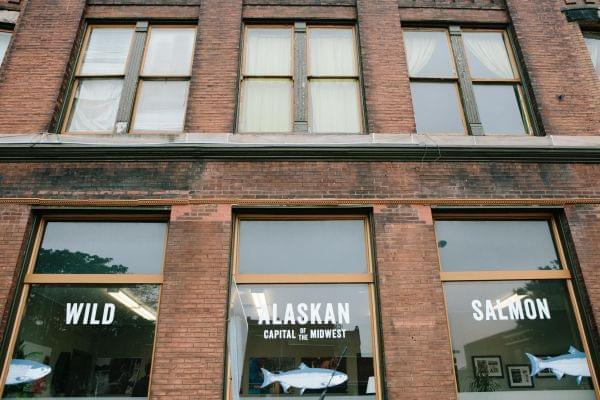
Sitka Salmon Shares has a downtown office in Galesburg, Illinois, (picutred here) and a warehouse outside of town. They also have operations in Sitka, Alaska; Madison, Wisconsin; and Schaumburg, Illinois. Sitka Salmon Shares
U.S. consumers’ hunger for fresh, local and organic foods has fed a marketplace that’s so big, little guys are — once again — having to evolve and specialize.
It’s especially true with community-supported agriculture programs (CSAs), which had been growing for years, but are starting to wane in the face of the rise of meal-kit companies and an oversaturated market.
“Maybe five years ago, a lot of CSAs were popping up left and right,” according to Guillermo Payet, president of a database for CSAs and farmers markets called Local Harvest. “We were having like 600 CSAs added per year.”
But he says that’s over: “So, even though we list 7,100 right now … We do know that a lot of CSAs are actually ceasing operations this year. I’m not really sure if it’s a 5 percent or a 10 percent, but it’s considerable.”
But even those meal-kit companies, such as Blue Apron and Hello Fresh, are struggling. Blue Apron, in particular, is having problems retaining customers and is even looking to find a footing in grocery stores to boost its profits.
What sets CSAs apart, Payet said, is the ability to create a community, provide a convenience and, crucially, offer something unique.
And that’s where Alaskan salmon comes in.
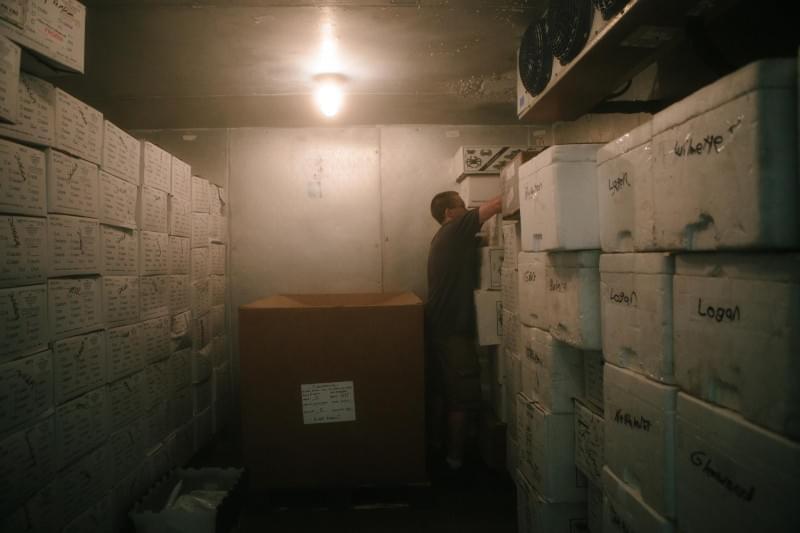
Sitka Salmon Shares' Galesburg warehouse has a massive freezer (pitctured here) and a walk-in cooler where employees process fish during the busy summer months.
Midwest market
Sitka Salmon Shares is based in Galesburg, Illinois —which seems counterintuitive given that the city is surrounded by corn and soybean fields. But this service has found a group of loyal customers.
“It’s crazy. Sustainable seafood and you can smell the farms,” company president Nic Mink said while driving his Prius from his company’s warehouse to his office in town.
He started the business when he was teaching about sustainable food at Knox College, which is in Galesburg. He had taken some students to Alaska and brought back fish for a fundraiser. It went so well, he and some students wrote up a business plan.
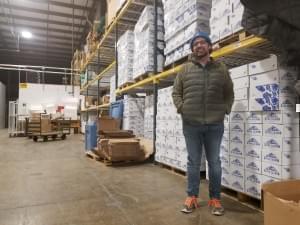
Nic Mink is the president and co-founder of Sitka Salmon Shares. He worked in sustainable fishing operations in Alaska before becoming a professor at Knox College in Galesburg. Once at Knox, a project on sustainable food with students grew into the business he runs today.
“Seven years later, we now have three locations. This is our main headquarters here in Galesburg, where we have about 15 employees, and we have a location in Madison, Wisconsin, and a location in Schaumburg (Illinois)” Mink said.
Instead of delivering fish out of his Prius, the company has vans and shipping network to take the frozen goods, caught by Alaskan fishermen, to much of the Midwest and East Coast.
Some customers, like Ivan Sagel in Chicago, have even seen the catch personally delivered by the fishermen themselves.
“Sometimes the fishermen might be in town for something that’s going on and so they’ll actually drive the delivery truck and hand you your fish and introduce themselves,” Sagel said. “I’ve met two of the actual fisherman.”
The sailing coach, charter boat captain and real estate agent said he’s a “sucker for quality food,” so he’s willing to go the extra mile for fish that he thinks tastes better and is from a source he trusts.
“You know when you meet your farmer, you meet your fisherman, you know you really have a connection to the source and there’s transparency on how it got to you,” he said.
And he’s paying for it: Sitka Salmon Shares’ frozen seafood costs between $15 and $25 a pound, depending on the monthly plan. Compare that to frozen seafood caught overseas and sold at grocery stores for $5 or $6 per pound.
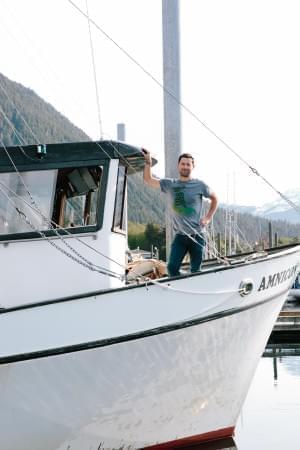
Joe Daniels fishes in Alaska from his boat, the Amnicon. Sitka Salmon Shares asked fishermen to buy in to the business early on so they could get the company off the ground in 2011. Since then, Daniels has met members of the CSA when they come to Alaska, and recently made his first trip to the Midwest.
But loyal customers want the quality, which means a lot to fisherman who work for Sitka Salmon Shares, like Joe Daniels.
“When I sell to any other buyer, they give me a check and that check goes into my bank account, and I trade my fish for a dollar amount. And once it gets hoisted off my boat, I never see it again and I never really think about it again,” he said.
But with Sitka Salmon Shares, in which he bought a stake, Daniels said the work is more meaningful “knowing that I could get the extra mile to make sure it’s the highest quality fish.
“And It’s just really nice to know that people appreciate that and kinda put a face on the person that’s sitting down at the dinner table to eat it.”
Constant change
Sitka Salmon shares certainly isn’t the only operation challenging the traditional CSA model: Others are doling out cheese, pies, flowers and even pickles.
And it’s that very need to adapt that brought about CSAs to begin with, according to author Steven McFadden, who has written several books on CSAs and their history.
“When the CSA idea was beginning in the United States, the farm crisis was underway (in the 1980s), and we were losing literally millions of farms,” he said. “Community farming is about the necessary renewal of agriculture and the necessary renewal of human health.”
But in the face of a saturated market and an increasing demand for convenience, Payet believes CSAs could go one of two ways: vanish like video stores or rebound like independent bookstores.
“The DVD shop got hit by streaming media and by Netflix DVDs in the mail. And they never recovered,” he said.
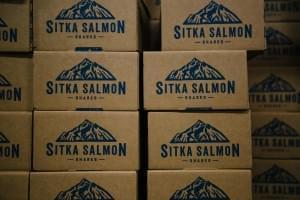
Sitka Salmon Shares brings in seafood from Alaska and sells it frozen to consumers in the Midwest and much of the East Coast.
Meanwhile, “people realize that there really isn’t a substitute to the ‘going to the bookstore,’” Payet said, adding that, “there’s community there and you meet other people and you can smell the books.”
While he’s pulling for CSAs to follow bookstores’ footsteps, he has advice for those who want to start a niche CSA: “Don’t. Not now. Wait a little.”
Follow Madelyn on Twitter: @MadelynBeck8

